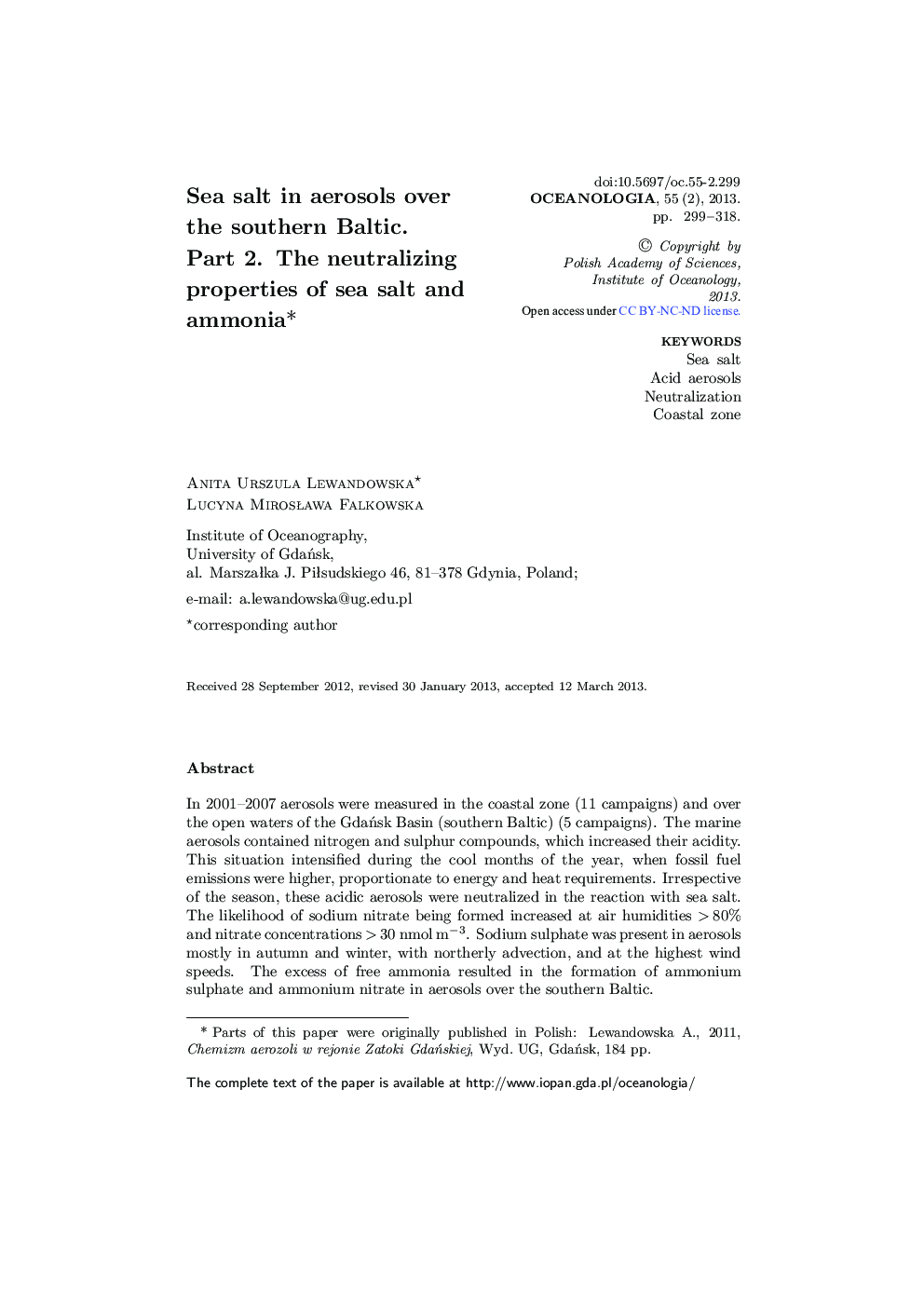| Article ID | Journal | Published Year | Pages | File Type |
|---|---|---|---|---|
| 2069843 | Oceanologia | 2013 | 20 Pages |
In 2001–2007 aerosols were measured in the coastal zone (11 campaigns) and over the open waters of the Gdańsk Basin (southern Baltic) (5 campaigns). The marine aerosols contained nitrogen and sulphur compounds, which increased their acidity. This situation intensified during the cool months of the year, when fossil fuel emissions were higher, proportionate to energy and heat requirements. Irrespective of the season, these acidic aerosols were neutralized in the reaction with sea salt. The likelihood of sodium nitrate being formed increased at air humidities > 80% and nitrate concentrations > 30 nmol m− 3. Sodium sulphate was present in aerosols mostly in autumn and winter, with northerly advection, and at the highest wind speeds. The excess of free ammonia resulted in the formation of ammonium sulphate and ammonium nitrate in aerosols over the southern Baltic.
